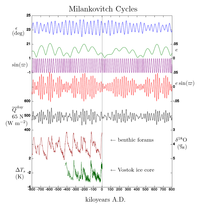
Photo from wikipedia
Abstract A few nonlinear dynamics (Hopf bifurcations and limit cycles) of density wave oscillations of a two-phase flow channel are studied in this work. The effects of different non-uniform axial… Click to show full abstract
Abstract A few nonlinear dynamics (Hopf bifurcations and limit cycles) of density wave oscillations of a two-phase flow channel are studied in this work. The effects of different non-uniform axial heat flux profiles (found to be a key factor) on the aforesaid non-linear stability behavior of the system are shown which is missing in existing studies. The novel outcomes of this study are presented by the change in Hopf bifurcation phenomena as the heat flux pattern and other design parameters are varied even though the total heat rate remains same. The innovative aspect of this study can be explained by the use of a nodalized reduced order model (NROM). The time-dependent spatial variations of the flow variables (enthalpy and quality) are approximated in-line to the provided heat flux profiles and corresponding steady state solutions. On one hand, this scheme is capable of analyzing both linear and nonlinear stability characteristics of the system over a wide range of axial heat flux profiles. On the other hand, in this model the node positions are defined in such a way that they vary automatically during the system evolution as per the provided heat flux profile. Hence, it acts as an auto-adaptive scheme and helps to minimize the computational effort required to achieve significant accuracy to capture the state variable variations. A few unique findings of the present work are as follows: i) although non-uniform axial heat flux is more linearly stable compared to uniform axial heat flux profile, it is less non-linearly stable. ii) single humped axial heat profiles are more linearly stable than double humped profiles, but they become less non-linearly stable.
Journal Title: International Journal of Thermal Sciences
Year Published: 2017
Link to full text (if available)
Share on Social Media: Sign Up to like & get
recommendations!